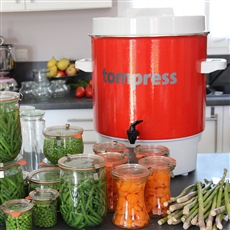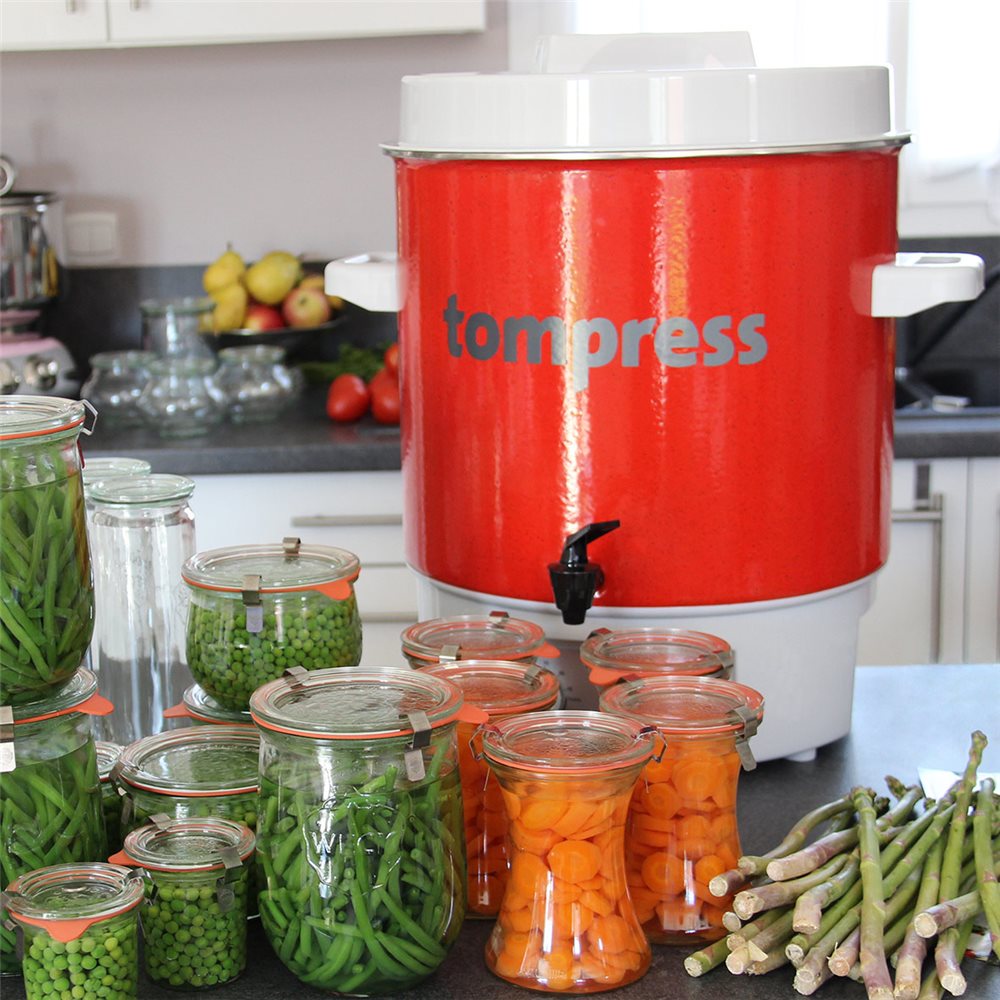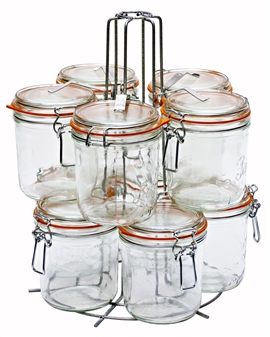What is the difference between an autoclave and a pressure cooker and what good can they do for our preserves?
Initially, the word autoclave meant ""closes hermetically under the effect of pressure"". The word was used to indicate pressure cookers in general, but things have evolved and the word now designates a sterilisation tool for preserves, laboratory instruments or surgical material…
Autoclave pressure chambers are subject to regulations. Preservation, even artisanal preservation, must be able to provide precise details about the temperatures to which the food is exposed and for how long. Autoclaves have measuring instruments and are subject to periodic checks from certified organisations. Firstly, this is because they are devices that are used under pressure (compressors in garages are subject to the same kinds of check) and secondly, it is to check the exactitude of the measuring instruments and ensure traceability.
In concrete terms, an autoclave is a pressure cooker that is subject to regulations. In Canada and other countries, the laws are different and the word can be used as a synonym for a pressure cooker. If you come across an ""autoclave"" for the Canadian market, you will notice that the manometer is graduated in PSI (pound per square inch and 1 bar corresponds to 14.503 PSI). Most household autoclaves do not authorise higher pressure for pressure cookers and the maximum temperature is equivalent. The devices are expensive and do not correspond to French legislation. Furthermore, they are fragile because of the instruments and the risk of hot liquid leaking out is much greater. They offer no special advantages, apart from professional models that cost several thousand euros!
To return to heat preservation methods, you can find two main families, and for home made preserves, there is no need to raise the temperature of the food too high: a good steriliser is enough.
-
Pasteurisation Above 68°C (155°F), pathogenic bacteria are eradicated. For more safety, we generally heat to around 75°C (167°F), as at this temperature, many of the vitamins will still be preserved. Pasteurisation also has the advantage of having little impact on the taste of food. Pasteurised fruit juice, for example, is not heated enough to give it a stewed taste. Kept away from the light in airtight bottles, it will easily keep for up to one year.
-
Sterilisation It is more appropriate to call this ""hermetic canning"", in French ""appertisation"", named after the inventor Nicolas Appert. Here, food is heated to around 100°C (212°F).
This means that in this situation, we are ""cooking to preserve"". To achieve boiling temperatures in excess of 100°C, you need to increase the pressure. This is what happens in an autoclave or pressure cooker. However, you are not going to reach extremely high temperatures! To give you an idea, if the atmospheric pressure is 1013 hectopascals on the day on which you are sterilising and your container can withstand 1 pressure bar, you will not exceed 119°C (246°F).
If you know the maximum pressure that your pressure cooker can withstand, you can make the calculation using the following formula: X bars = T4 / 1004
X = atmospheric pressure + pressure in the recipient (you will need a barometer)
T = temperature in degrees Celsius
Example for a cooker with 1 pressure bar
^: indicates that the following figure is an exponent 1.013 (average atmospheric pressure) + 1 bar = 2.013 bars
2.013 = T^4 / 100^4
T^4 = 2,013 x 100^4 or 201300000
T = V^4 201300000 or 119.1134884 degrees
Sterilisation or pasteurisation, to preserve your product, you must be sure that the chosen temperature has been reached at the heart. Many very serious works have been written on this subject.
Always refer to them. Happy preserving everyone!
Precautions
A preserve that has gone off will ferment. If for any reason, your jar opens by itself or is not under pressure, do not eat the contents. When you heat the food to sterilise it, the air it contained was dilated and escaped, but could no re-enter when it cooled. It is a kind of vacuum sealing process..





























